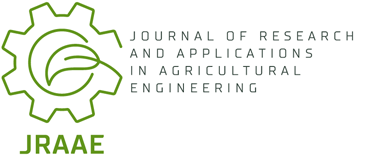Current issue
Online First
Archive
Instructions for Authors
Guide for Authors
Peer Review Policy
Research Ethics Policy
Crossmark Policy
Ghostwriting and Guest Authorship
Copyright
Open Access Policy
Plagiarism
About the Journal
Aim and Scope
Scientific Board
Publisher
Editorial Board
Indexing in Databases
Personal Data Protection
Repository Policy
Contact
ORIGINAL PAPER
Impact of effective microoganisms on selected physical and aqueous properties and the structure state of the arable-humus horizon of mineral soils at varying content of organic matter in them. Part I. Physical and aqueous properties
Journal of Research and Applications in Agricultural Engineering 2011;56(3):179-183
KEYWORDS
ABSTRACT
The paper presents results of investigations testing the influence of different doses of the microbiological inoculum of effective microorganisms (EM) on basic physical and aqueous properties of arable-humus horizons of mineral soils of varying texture and at varying content of organic matter in them. Soil material was collected from two arable soils (Phaeozems and Luvisoils). Pot experiments were established. The organic material was added in the form of muck and 3 doses of EM-A were applied. The determinations comprised, among others: texture composition, soil density, density of solid phase, total and drainage porosity, saturated hydraulic conductivity, soil water-binding potentials and useful potential and effective retention. It was found that different EM-A doses exerted a different impact on soils of varying levels of organic matter and texture. Traits which underwent positive changes included, among others, soil density and porosity as well as water permeability. The impact of EM-A on water capacities and retention capabilities was negligible.
REFERENCES (19)
1.
Albiach R., Canet R., Pomares F., Ingelmo F.: Organic mater components and aggregate stability after the application of different amendments to a horticultural soil. Bioresource Technology, 2001, 76, 125-129.
2.
Cosentino D., Chenu C., Bissonnais Y.L.: Aggregate stability and microbial community dynamics under drying-wetting cycles in a silt loam soil. Soil.& Biolchem., 2006, 38, 2053-2062.
3.
Denef K., Six J., Merckx R., Paustian K.: Short- term effects of biological and physical forces on aggregate formation in soil with different clay mineralogy. Plant and Soil, 2002, 246, s. 185-200.
4.
Gajewski P., Kaczmarek Z., Mrugalska L.: Wpływ wzrastających dawek preparatu EM-A na właściwości gleb. Cz. I. Właściwości fizyczne i wodne. Journal of Research and Applications in Agricultural Engineering, 2010, Vol. 55(3), s. 75-80.
5.
Gonet S.S., Mazurkiewicz M. (praca zbiorowa): Rola materii organicznej w środowisku. Pol. Tow. Subst. Hum. Wrocław, 2007, 152 ss.
6.
Kaczmarek Z., Owczarzak W., Mrugalska L., Grzelak M.: Wpływ efektywnych mikroorganizmów na wybrane właściwości fizyczne i wodne poziomów orno-próchnicznych gleb mineralnych. Journal of Research and Applications in Agricultural Engineering, 2007, Vol. 52 (3), s. 73-77.
7.
Kaczmarek Z., Jakubus M., Grzelak M., Mrugalska L.: Wpływ dodatków różnych dawek efektywnych mikroorganizmów do poziomów orno-próchnicznych gleb mineralnych na właściwości fizyczne i wodne. Journal of Research and Applications in Agricultural Engineering, 2008, Vol. 53 (3), s. 118-122.
8.
Klute A.: Water retention: Laboratory methods. In: Klute A. (Ed.). Methods of Soil Analysis, Part 1:Physical and Mineralogical Methods. 2nd edn. Agron. Monogr. 9 ASA and SSSA, Madison, Wi., 1986.
9.
Klute A., Dirksen C.: Hydraulic conductivity and diffusivity: laboratory methods. In: Klute A. (Ed.). Methods of Soil Analysis, Part 1: Physical and Mineralogical Methods. 2nd edn. Agron. Monogr. 9 ASA and SSSA, Madison, Wi., 1986.
11.
Mau F.P.: Fantastische Erfolge mit Effektiven Mikroorganismen in Haus und Garten, für Pflanzenwachstum und Gesundheit. Goldmann Verlag, 2002.
12.
Mocek A., Drzymała S.: Geneza, analiza i klasyfikacja gleb. Poznań: Wyd. UP, 2010.
13.
Polski Komitet Normalizacyjny: Polska Norma PN-R-04032: Gleby i utwory mineralne. Pobieranie próbek i oznaczanie składu granulometrycznego, 1998.
14.
Polskie Towarzystwo Gleboznawcze: Systematyka gleb Polski. Rocz. Glebozn., 1989, PTG 40, 3/4: 45-54.
15.
Polskie Towarzystwo Gleboznawcze: Klasyfikacja uziarnienia gleb i gruntów mineralnych – PTG 2008. Rocz. Glebozn., 2009, 60, 2: 5-16.
16.
Soil Conservation Service: Soil Survey laboratory methods manual. Soil Survey. Invest. Raport No. 42., U. S. Dept. Agric., Washington, DC, 1992.
17.
Ślusarczyk E.: Określenie retencji użytecznej gleb mineralnych dla prognozowania i projektowania nawodnień. Melioracje Rolne, 1979, Nr 3: 1-10.
18.
Tołłoczko W., Trawczyńska A., Niewiadomski A.: Zawartość związków próchnicznych w glebach nawożonych preparatem EM. Rocz. Glebozn., 2009, t. 60, nr 1, s. 97-102.
Share
RELATED ARTICLE
We process personal data collected when visiting the website. The function of obtaining information about users and their behavior is carried out by voluntarily entered information in forms and saving cookies in end devices. Data, including cookies, are used to provide services, improve the user experience and to analyze the traffic in accordance with the Privacy policy. Data are also collected and processed by Google Analytics tool (more).
You can change cookies settings in your browser. Restricted use of cookies in the browser configuration may affect some functionalities of the website.
You can change cookies settings in your browser. Restricted use of cookies in the browser configuration may affect some functionalities of the website.


